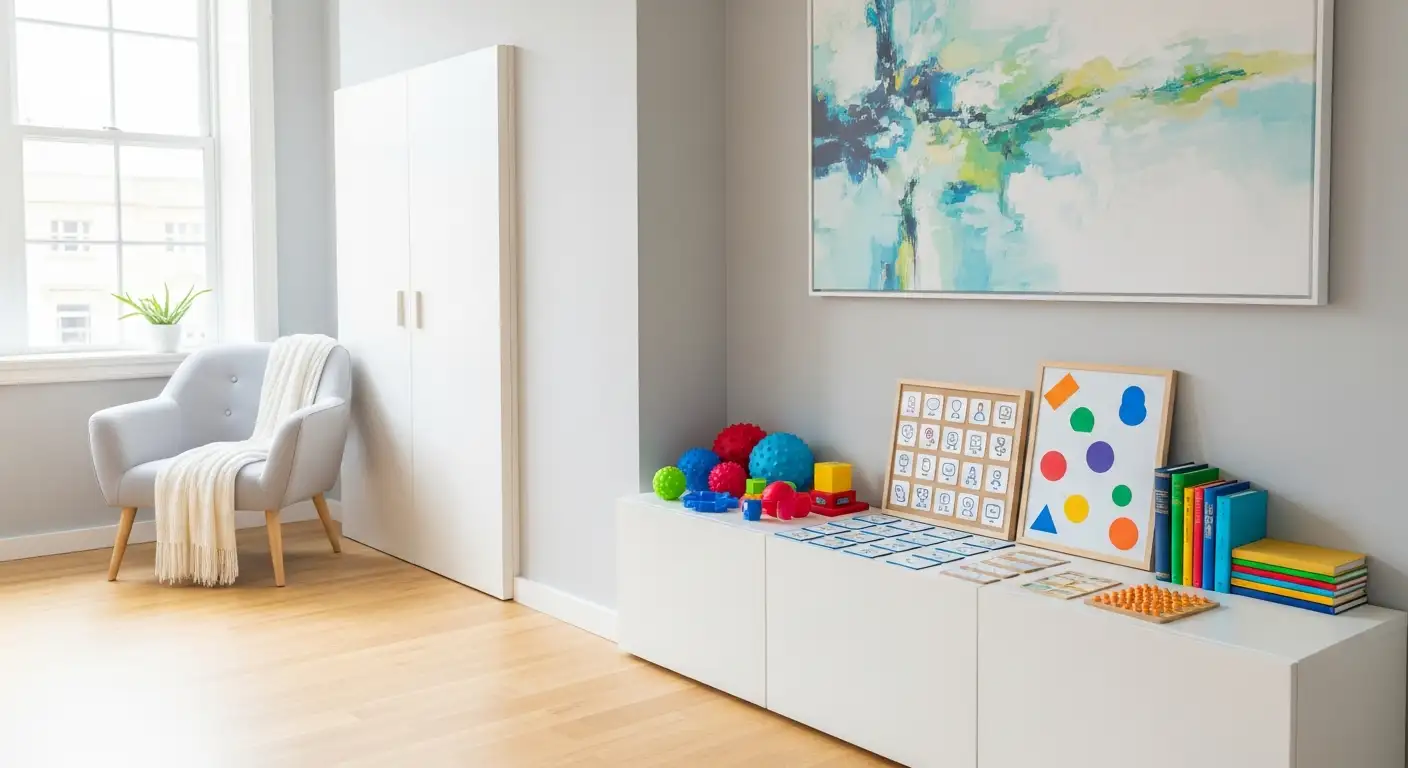Understanding the Impact of Positive Communication in Autism Therapy
In recent decades, Applied Behavior Analysis (ABA) therapy has become a cornerstone in supporting individuals with Autism Spectrum Disorder (ASD). Central to its effectiveness is the role of positive language and reinforcement, which shapes therapy into a constructive and empowering experience. This article explores how ABA therapy leverages positive language to facilitate behavioral change, enhance communication, and promote social integration for individuals with autism.
Defining Applied Behavior Analysis (ABA) Therapy

What is Applied Behavior Analysis (ABA) therapy?
Applied Behavior Analysis (ABA) therapy is a scientifically supported treatment that focuses on understanding and improving behaviors through learning principles. It is primarily used to help individuals with Autism Spectrum Disorder (ASD) develop essential skills like communication, socialization, and daily living activities while reducing challenging behaviors.
Scientific Principles Underpinning ABA
ABA therapy is grounded in the study of behavior, analyzing the relationships between environmental factors and behavioral responses. This includes assessing antecedents (what happens before behavior), behaviors themselves, and consequences (what happens after).
Key Components of ABA Therapy
ABA programs involve techniques like positive reinforcement—which rewards desirable actions to encourage their repetition—and prompting, which supports learning new skills. Therapy sessions are designed to be highly individualized, tailored to each child's strengths, needs, and interests.
Personalization of Therapy Plans
Every ABA intervention plan is customized and guided by a qualified behavior analyst. Goals usually include enhancing communication, social skills, self-care tasks, and academic abilities. This individualized approach ensures that therapy is relevant and engaging for each child.
Data-Driven Progress Monitoring
ABA relies heavily on collecting data throughout therapy sessions to monitor a child’s progress. This data enables practitioners to adjust therapy strategies as needed to maximize effectiveness, ensuring that interventions lead to meaningful improvements.
How Positive Language Amplifies ABA Therapy Benefits for Autism

How does ABA therapy benefit individuals with autism?
ABA therapy offers comprehensive support for individuals with autism by teaching vital skills across several domains. It focuses on communication, social interaction, daily living tasks, and academic abilities. These improvements come through scientifically proven strategies, including positive reinforcement, direct instruction, and natural environment training. Each therapy session is carefully tailored to an individual's needs and strengths, making it highly effective.
How does ABA therapy teach communication, social skills, and daily living?
Positive, reward-based techniques help improve expressive language and communication skills by using visual aids like pictures and engaging activities. Group settings enhance social abilities such as sharing and interaction, aiding in friendship formation. Furthermore, ABA therapy targets essential life skills, including getting dressed, using the bathroom, and personal hygiene, to foster greater independence.
How does ABA therapy contribute to emotional regulation and coping?
ABA techniques support children in managing emotions by teaching them to express frustrations healthily and recognize feelings. This emotional regulation is crucial for reducing challenging behaviors and building resilience.
Why is early and intensive intervention vital for ASD outcomes?
Starting ABA therapy early—ideally before age six—and engaging in intensive sessions leads to better developmental progress. Early treatment harnesses the brain's natural capacity for learning, resulting in improved socialization, language, and adaptive skills.
How does ABA therapy improve overall quality of life and social participation?
By teaching behavioral management, social cues, and confidence-building strategies, ABA prepares individuals for more independent and socially fulfilling lives. These gains enrich community participation and enhance the quality of life for people with autism.
Who Provides ABA Therapy and How Positive Communication Defines Their Approach

Who Typically Provides ABA Therapy?
ABA therapy is delivered by qualified professionals including Board Certified Behavior Analysts (BCBAs), therapists, and behavioral technicians. These specialists create and carry out personalized treatment plans tailored to each child's unique needs.
Organizations Specializing in Autism Interventions
Specialized organizations such as Autism Learning Partners, the Center for Autism and Related Disorders (CARD), and Behavior Frontiers focus exclusively on autism spectrum disorder interventions. These organizations combine expert knowledge and supportive techniques to enhance developmental outcomes.
Settings for ABA Therapy Delivery
ABA therapy is flexible and can be provided in various environments including in-home, school settings, community venues, and through telehealth platforms. This flexibility ensures many families can access therapy in a setting that suits their lifestyle.
Emphasis on Evidence-Based Practices Linked to Positive Communication
Providers prioritize evidence-based methods that promote positive and supportive communication strategies. Key components include social skills development and behavioral assessments, all aimed at fostering meaningful interaction and learning.
Parent Training and Social Skills Development
Many ABA programs include parent training, empowering families with strategies to support their child's progress. Group sessions and social skills training are also common to encourage sharing, interaction, and friendship-building.
Accessibility Through Insurance and Telehealth Services
Insurance coverage from major providers helps make ABA therapy accessible to a broad range of families. Additionally, telehealth services further improve accessibility, especially for children living in remote or underserved areas.
Core Techniques of ABA Therapy Centered on Positive Reinforcement and Visual Supports

What techniques are commonly used in ABA therapy?
ABA therapy employs a variety of techniques designed to encourage positive behavior and skill development in children with Autism Spectrum Disorder (ASD). One primary method is positive reinforcement, which involves rewarding desired behaviors to increase their frequency. Negative reinforcement can also be used, where an unpleasant stimulus is removed to encourage behavioral changes.
Visual supports such as pictures, charts, and videos play an important role. These aids help children better understand and imitate desired behaviors by providing clear, concrete examples. Prompting techniques introduce cues or assistance to initiate a behavior, followed by fading, where support is gradually withdrawn to foster independence.
Behavior chaining breaks down complex tasks into smaller, manageable steps, teaching each sequentially to build toward the complete skill. Alongside these, extinction procedures are practiced to reduce challenging or maladaptive behaviors by withholding reinforcement, while modeling shows the correct behaviors for imitation.
Other strategies include behavior contracts outlining clear expectations, redirection to shift attention from inappropriate to appropriate actions, and script fading to promote social and functional communication skills.
Role of Positive Language in Technique Effectiveness
The use of positive language enhances motivation and reinforces behavioral progress. Incorporating encouraging words during reinforcement and instruction helps maintain a supportive environment that fosters learning and confidence.
Together, these techniques create a structured, engaging, and individualized approach within ABA therapy, promoting meaningful behavioral improvements and life skills development for children with ASD.
The Versatility of ABA Therapy Environments and Their Effect on Language Development

Settings for ABA therapy: home vs. clinic
ABA therapy can be conducted in various settings, most commonly at home or in specialized clinic centers. Both environments offer unique contexts for learning and personalized intervention, allowing sessions to be tailored to a child's specific needs, strengths, and interests. This flexibility helps maximize engagement and progress.
Impact on language milestones and barriers
Studies show that children undergoing ABA therapy demonstrate significant improvements in language milestones over time. Simultaneously, there is a notable reduction in language barriers, meaning children face fewer difficulties in expressing themselves and understanding others during therapy.
Research findings on treatment environment
Research examining the effect of treatment environment on language development for children with ASD found no significant difference between home-based and clinic-based ABA therapy regarding language milestones and barriers. This suggests that the location of therapy might not critically influence language outcomes.
Importance of treatment effectiveness across environments
Although the environment—home or clinic—may not distinctly affect language proficiency outcomes, ensuring that ABA therapy is effectively delivered remains crucial. Success depends on the quality and consistency of intervention, individualized approaches, and employing evidence-based techniques like positive reinforcement and visual aids.
Social and behavioral outcomes related to therapy setting
Beyond language development, the environment might influence other areas such as social interaction and behavioral management. Group sessions often held in clinics can promote social skills like sharing and interaction, while home settings may offer a comfortable space for learning essential life skills.
Role of the environment in therapy success
Overall, ABA therapy's impact is multifaceted, and while treatment setting does not appear to determine language gains strictly, it can affect social and behavioral progress. Adapting therapy to the child's needs within any environment supports better outcomes, highlighting the therapy's versatile nature.
Empowering Autism Therapy Through Positive Language and Evidence-Based ABA
ABA therapy stands as a transformative approach for individuals with autism, utilizing positive language as a vital tool for learning and growth. The synergy of scientifically grounded techniques, individualized plans, and supportive communication fosters significant improvements in social, communicative, and daily living skills. Whether delivered at home, in clinics, or community settings, ABA’s emphasis on positive reinforcement and visual support ensures that therapy resonates with each learner's unique needs. Early intensive engagement and expert-led programs continue to unlock potential, offering hope and enhanced quality of life for countless families. As awareness and accessibility expand, the role of positive language within ABA therapy remains pivotal in shaping successful futures for people with autism.
References
- 6 Benefits of ABA Therapy for Children with Autism
- Applied Behavior Analysis Therapy for Children with Autism ...
- ABA Techniques: Strategies for Behavior Analysts - GSEP Blog
- ABA Therapy Examples, Definition & Techniques
- Applied Behavior Analysis (ABA)
- Applied Behavior Analysis (ABA)
- Applied Behavior Analysis (ABA)














